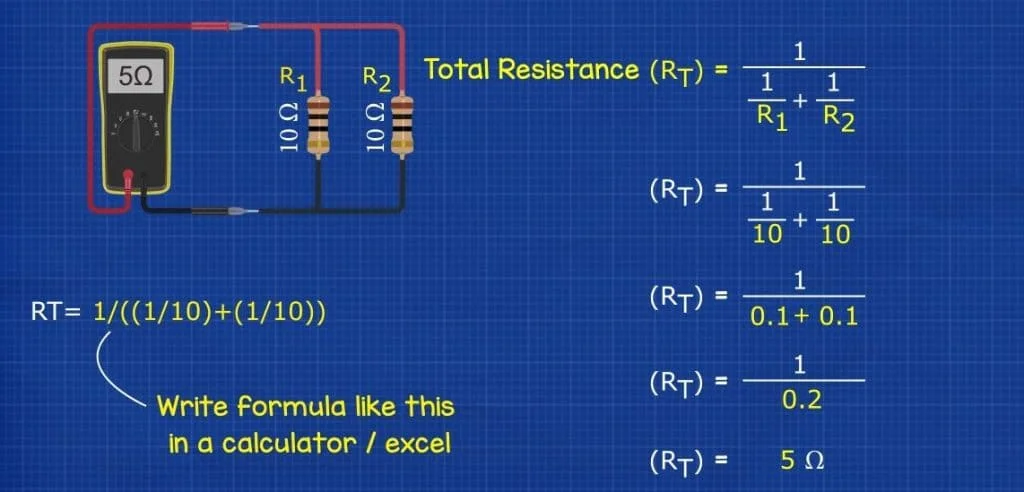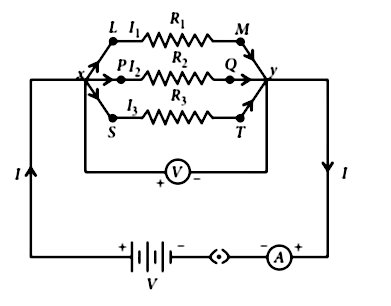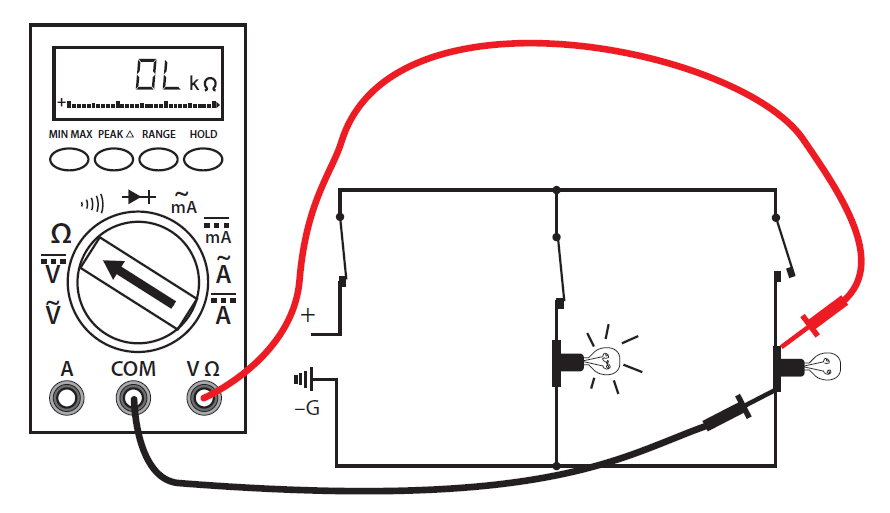Physical quantities, symbols, and SI Units
| Physical Quantity | Symbols | SI Unit |
| Voltage (Potential Difference) | V | Volt (V) |
| Work Done | W | Joule (J) |
| Charge | Q or q | Coulomb (C) |
| Current | I | Ampere (A) |
| Resistance | P | Ohm (Ω) |
| Resistivity | ρ | Ohm. meter {Ωm) |
| Power | P | Wait (W) |
| Heat Produced | H | Joule (J) |
Symbols of various components used in electric circuits
Charge q on a body is always denoted by
q=ne,where n = any integer positive or negative and e=1.602×10−19 C i.e., charge on an electron or proton.
Workdone = charge × potential or potential difference
Mathematically,
W = Q × V = Q ( V2 − V1) Joule
Electric Current = Charge / Time
Electric Current = charge flowing through any conductor per unit time.
Or,
I = q / t
The unit of current is Ampere.
- An ampere is equivalent to a charge of one Coulomb per second.
- Ampere or ‘amp’ is a unit of electric current denoted by A. It is named after the French Physicist and Mathematician Andre-Marie Ampere, who is considered as the ‘Father of Electrodynamics’.
- The rate of electron flow in an electrical conductor is measured in Ampere.
- One ampere of current represents one coulomb of electrical charge, i.e. 6.24×1018 charge carriers, moving in one second.
- In other words, an ampere is the amount of current produced by the force of one volt acting through a resistance of one ohm.
- It is one of the seven basic SI units.
- Length – meter (m)
- Time – second (s)
- Amount of substance – mole (mole)
- Electric current – ampere (A)
- Temperature – kelvin (K)
- Luminous intensity – candela (cd)
- Mass – kilogram (kg)
Ohm’s Law









Resistivity
Resistivity is defined as the electrical resistance of a conductor of unit cross-sectional area and unit length.
The resistance of any conductor is directly proportional to the length of the conductor and inversely proportional to the area of the cross-section of the conductor.
Circuit to verify Ohm’s law

= ohm – metre (or Ω m)

Electric Power
Electric Power is the electrical work done per unit time.

Unit of Power
The Power of 1 watt is a rate of working of 1 joule per second.

Electric Power = Potential difference × Current
Electric Power = Voltage × Current
Symbols and Notations

Some Other Formulae for calculating Electric Power
i. Power P in terms of I and R.
P = I2 × R
ii. Power P in terms of V and R

Electrical Energy = Power × Time
E = P x t
Commercial Unit of Electrical Energy: Kilowatt-Hour
1 Kilowatt-hour (Electrical Energy unit)= 36,00,000 joules (or 3.6 × 106 J)
Heating Effect of Current
W = Q × V ……….. (1)
From the definition of current we know that:
Current,

So, Q = I × t ……….. (2)
And from Ohm’s law, we have

or Potential difference, V = I × R ……….(3)
Now, putting Q = I × t and V = I × R in equation (1), we get
W = I × t × I × R
So, Work done, W = I2 × R × t
Assuming that all the electrical work done or all the electrical energy consumed is converted into heat energy, we can write ‘Heat produced’ in place of ‘Work done in the above equation. Thus,
The heat produced H = I2 × R × t joules
a) Square of current (I2)= H ∝ I2
b) resistance of the wire (R) = H ∝ R
